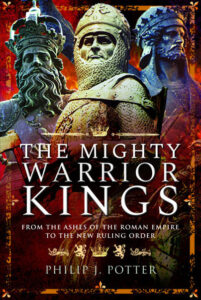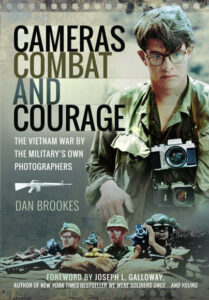
A Procession of Powerful Men
Philip J. Potter, The Mighty Warrior Kings (Pen & Sword, 2020)
The Mighty Warrior Kings takes readers on a journey from the Dark Ages to the early modern era through the lives of nine powerful leaders each of whom changed their part of Europe in significant ways. It also reveals by omission the importance of an introduction to establish connections and propose a thesis. Potter seems to think this is self-evident with this book. It isn’t.
No introduction then, only a prelude from Julius Caesar’s assassination in 44BCE to the 8th Century CE and the reign of Charlemagne where the chapters begin. The nine chapters in this book each follow a separate warrior king: Charlemagne, Alfred of Wessex, Cnut, William I, Frederick I Barbarossa, Richard I, Frederick II, Louis IX, and Robert I the Bruce. Potter narrates their biographies in a straightforward manner, ending each chapter with a selection of sources relating to that warrior king. He ends with a postscript that continues the general narrative into the 16th Century and the end of the period of the warrior kings. His bibliography gives the complete references for the sources cited at the end of each chapter.
The Mighty Warrior Kings is a collection of solid but unremarkable biographies of undoubtedly great men if measured in terms of their military and political power. The assemblage of these warrior kings holds few surprises, though Richard I and Robert the Bruce are placed in higher company than they probably deserve. From that perspective, The Mighty Warrior Kings is a good read, but the jacket claim that “the warrior kings created a new Europe with a centralized power base” is more than a stretch. It is difficult, therefore, to determine the intended audience for this book, particularly in an era when the ‘great’ men school of history is beyond resuscitation.
BUY NOW

